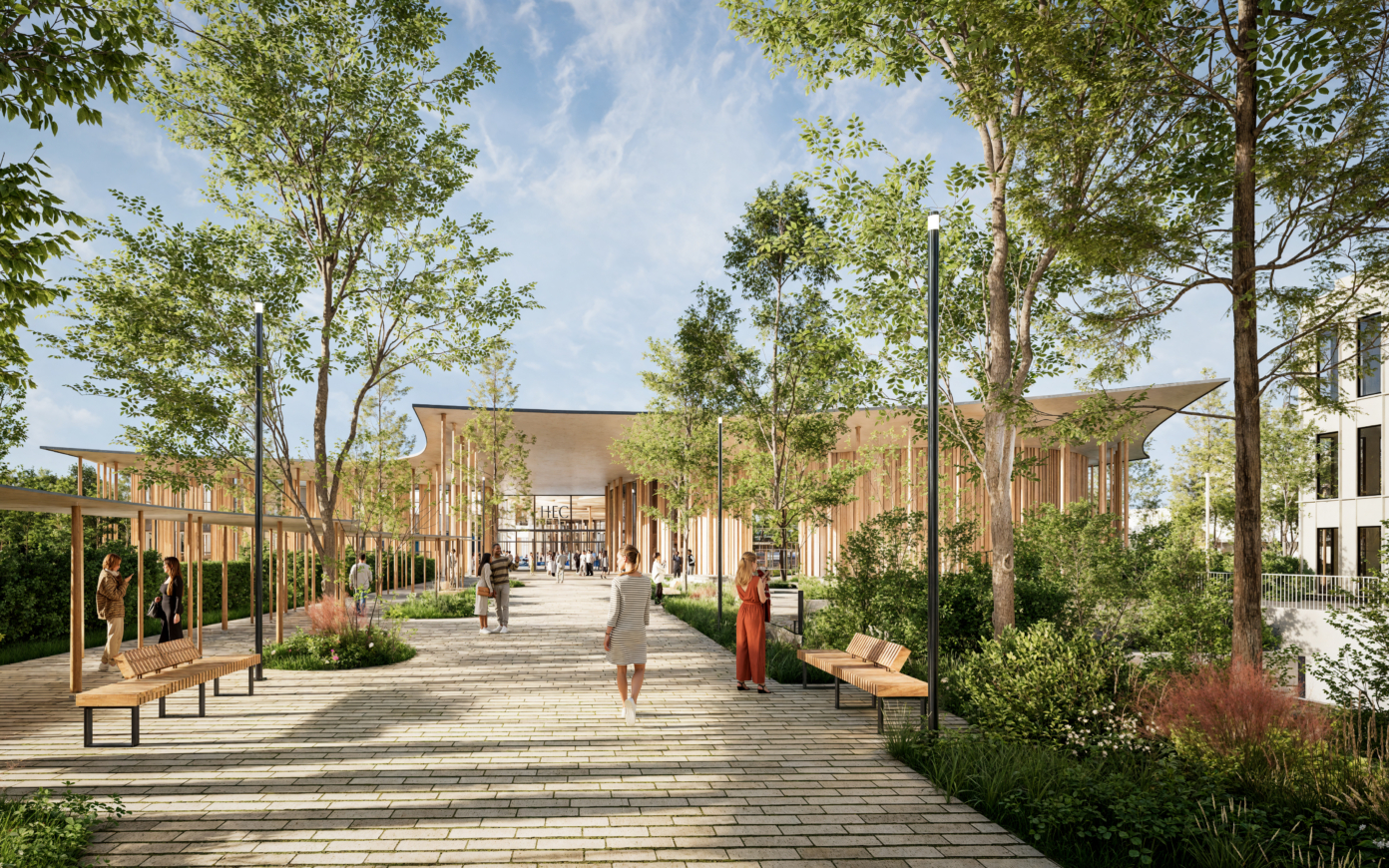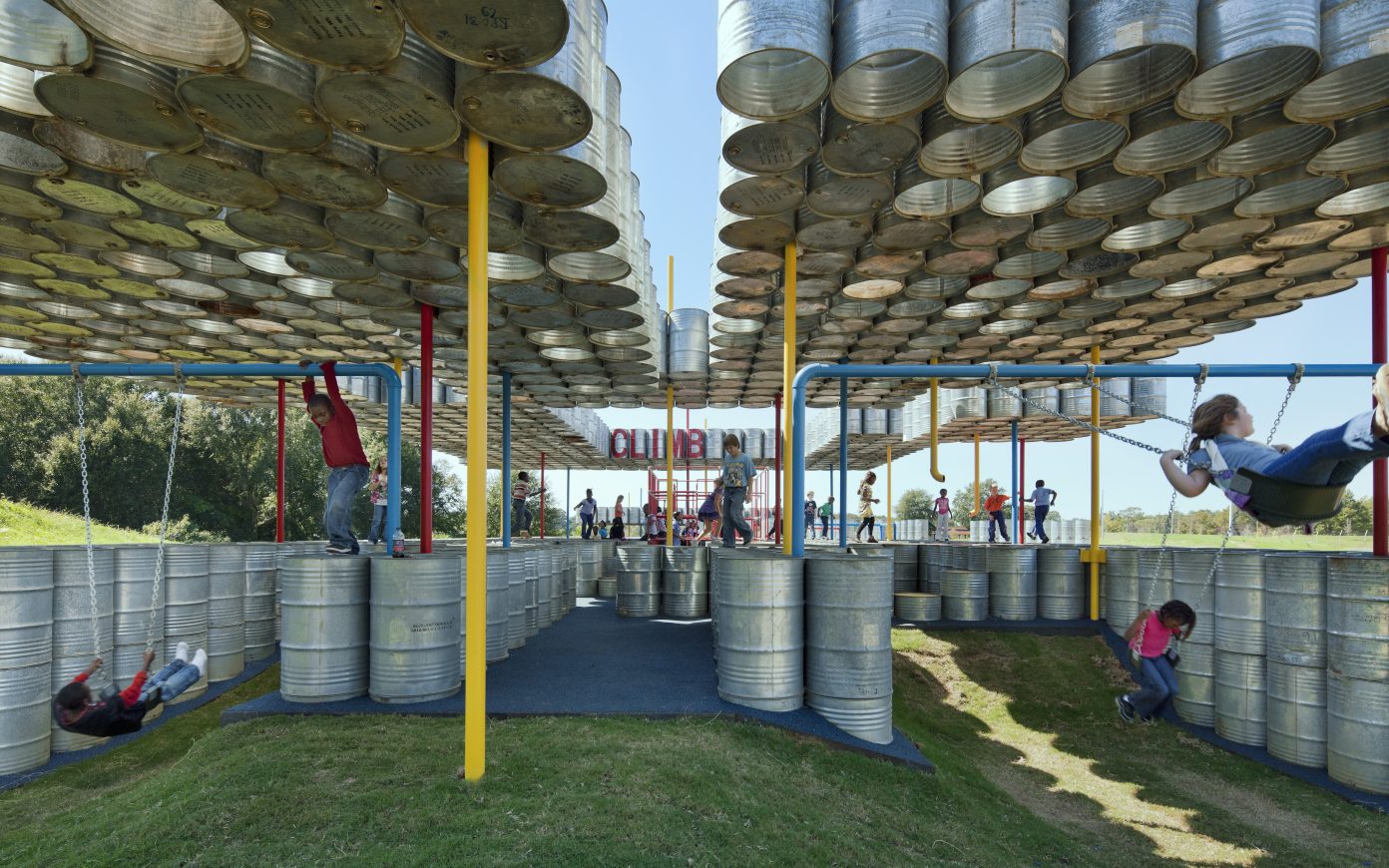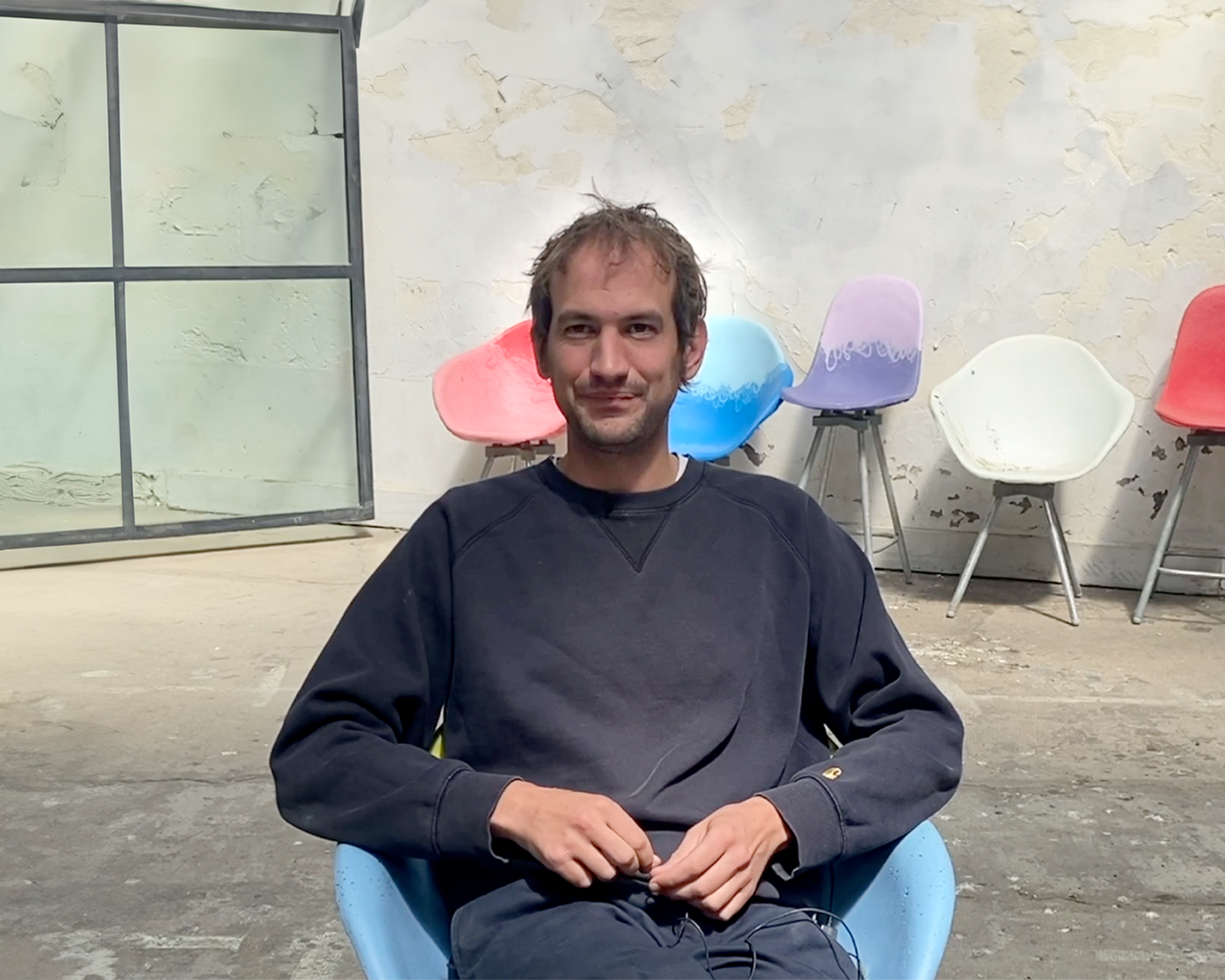Nestled in the heart of the Bièvre Valley, the HEC campus embodies the living archive of modern tensions between nature and knowledge, heritage and forward-thinking. In a world undergoing transition, the school chooses to revisit this exceptional environment and integrate it into a sustainable, inclusive, and ambitious strategy. PCA-STREAM proposes a project that is both contextual and transformative: restoring coherence to a fragmented domain, reactivating landscape and social continuities, and creating a new embodied centrality : the Campus Heart, to give form to the HEC of the 21st century. A place of learning in and with the landscape. A campus aligned with its time.
Trees

La Source Vive is a new concert hall dedicated to chamber music located in Évian. The result of a collaboration between architects Patrick Bouchain and Philippe Chiambaretta. Its conch-like form is the outcome of sensory experimentation and scientific analysis aimed at achieving exceptional acoustics while blending seamlessly into its scenic surroundings. The project is housed by the Évian Resort and embodies Aline Foriel-Destezet’s commitment to promoting music. Born of her desire to support the creation of an architectural complex featuring a unique concert hall in service of a major music project, La Source Vive will be located at the Mélèzes site, in the close vicinity of La Grange au Lac, another iconic music venue designed thirty years ago by Patrick Bouchain. Together, they will form an exceptional architectural complex dedicated to music—two complementary facilities within the same institution working together to provide a complete, open, and supportive musical experience.
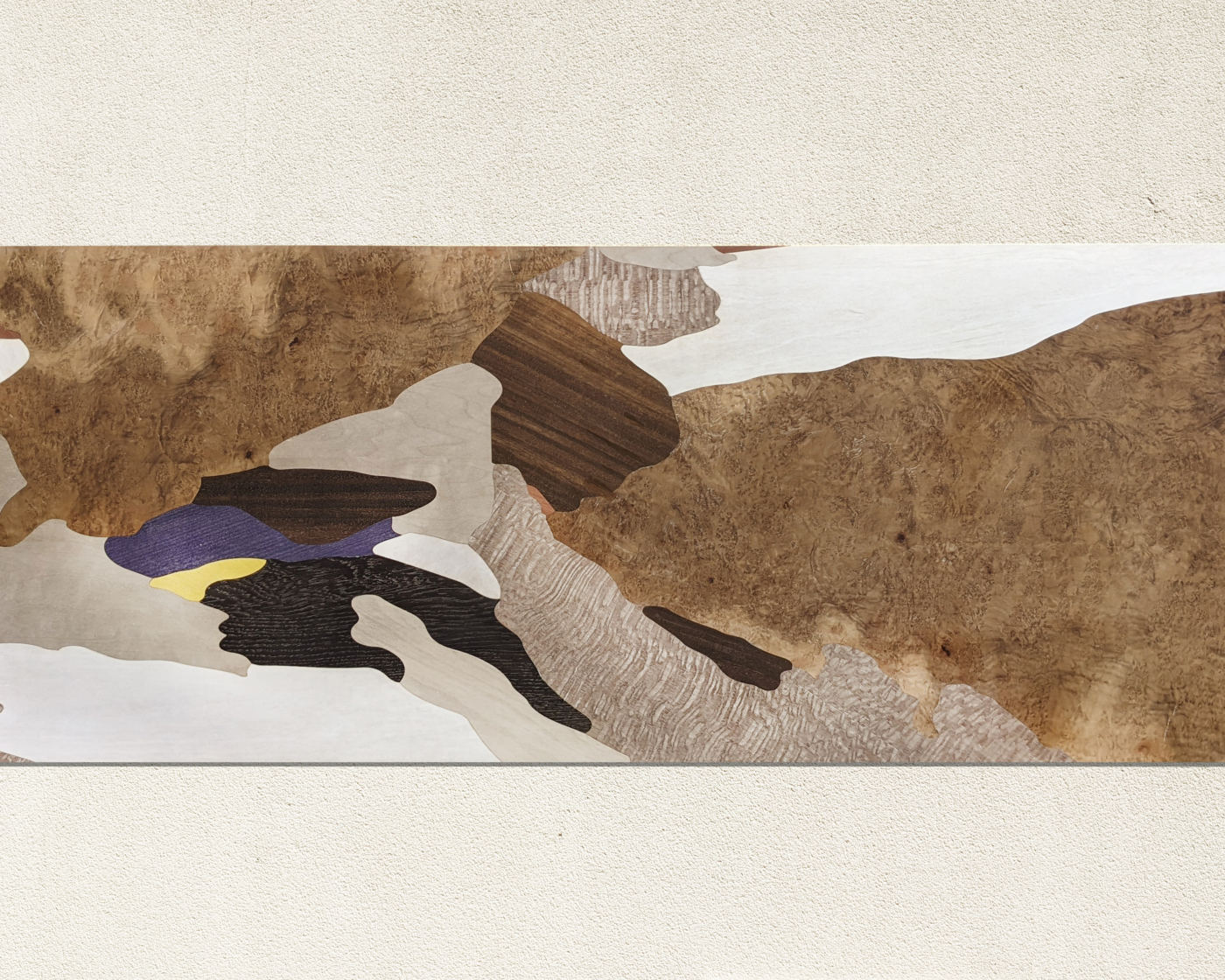
Wood
France has the 4th largest forest area in Europe, yet 40% of its timber is imported. At a time when Google’s London headquarters, designed in 2016 with a solid wood structure, has still not been delivered, and when the tallest wooden tower is due to be built in Tokyo in 2028, reaching a height of 100 metres, where does France stand in relation to wood? The RE2020, through the dynamic life cycle analysis, encourages the use of bio-sourced materials to promote the storage of biogenic carbon in buildings. The SNBC is explicitly banking on this sector to achieve its 2050 targets. However, the Paris Fire Brigade doctrine published in 2021 greatly complicates its use in architecture. How can these contradictions be overcome?
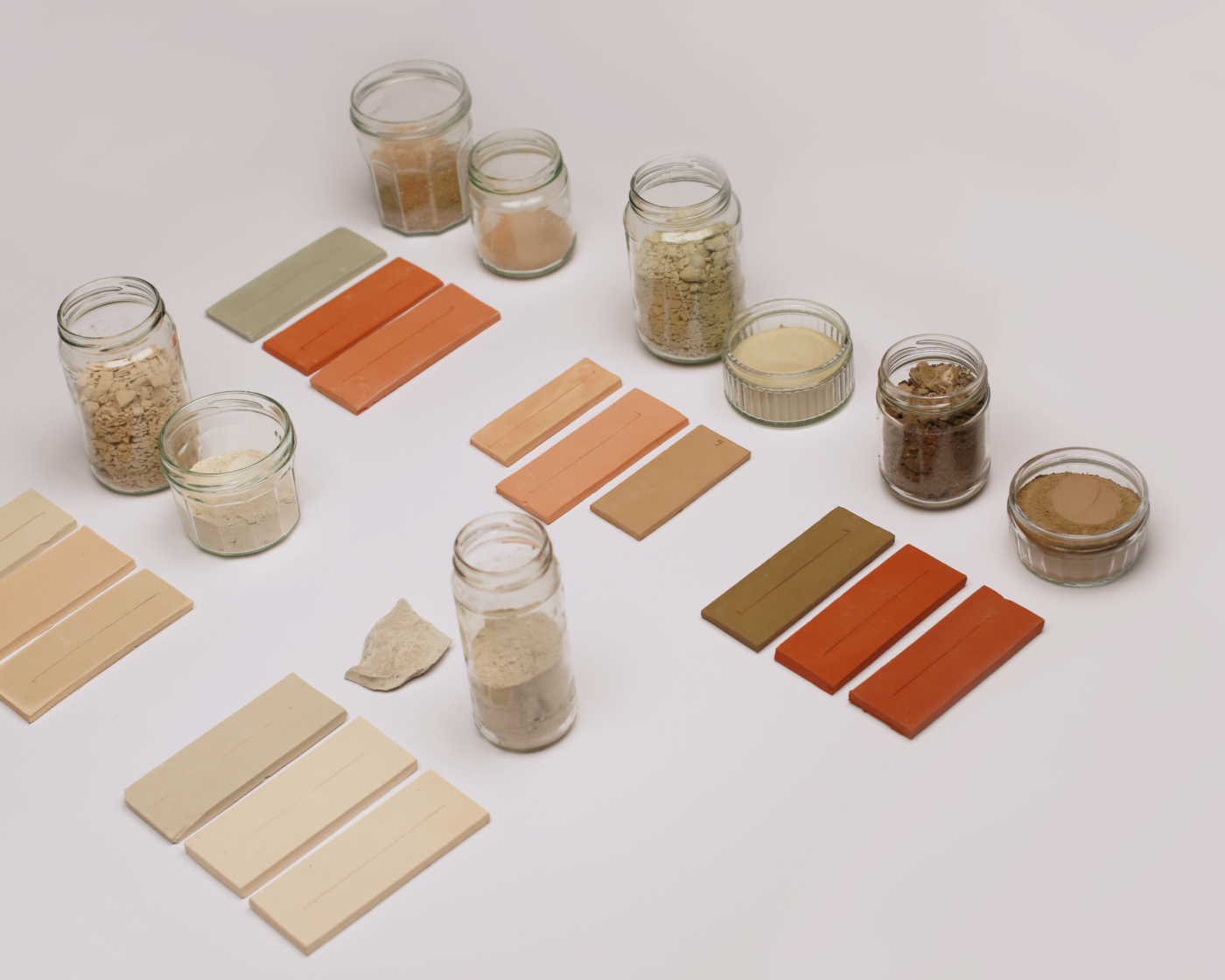
Soil
Although soil is used as a building material in many parts of the world, it has often been regarded as a waste product in France in recent decades, with little use being made of excavated soil. However, its thermal and hygrometric properties, its extremely low carbon footprint when used raw, its abundance and the natural variations in colour that it offers in every region make it a rich and inspiring material for today’s architects and designers. How can we adapt our building techniques to bring this material into line with contemporary requirements, and get rid of the vision of primitive housing that it still evokes for many people?
“ What can we change in the way we inhabit the land to preserve the soil as an environment? ”
“ What can we change in the way we inhabit the land to preserve the soil as an environment? ”
Soil as an environment, property as an inhabiting capacity
Elissa Al Saad is an architect and laureate of the 2023 Palladio Fellowships for her thesis on soil as an environment. By comparing different possible forms of land appropriation, she raises the issue of preserving land resources in relation to ownership. The aim is to think of property as a support for a way of inhabiting that considers land as a common good.


Exotic trees in the City
Botanist Serge Muller, a professor emeritus at the French National Museum of Natural History, is a specialist of “invasive alien species.” He discusses the concept of “nativeness” and lays out the contours of a policy opening cities to new tree species that could become important allies in coping with global warming. Based on an interview conducted in partnership with Coloco.
“ A Canopy Plan to reduce urban heat islands. ”
“ A Canopy Plan to reduce urban heat islands. ”
Nature-based solutions
Frédéric Ségur is the head of the Landscape and Urban Forestry department at Lyon metropolis. There, he is in charge of the Plan Canopée, and ensures that policy actions related to water, plants, and climate are aligned. He alerts us to the fact that we must reclaim the lost knowledge of urban plantations and tree care. READ THE TRANSCRIPT


The language of forests
The anthropologist and author of How Forests Think (University of California Press, 2013) recounts his Amazonian experience among the Runa people in order to convey to our Western minds the idea of a language that can go beyond words and symbols. A language that connects the beings of the forest, both human and non-human. A language that we seem to have forgotten…
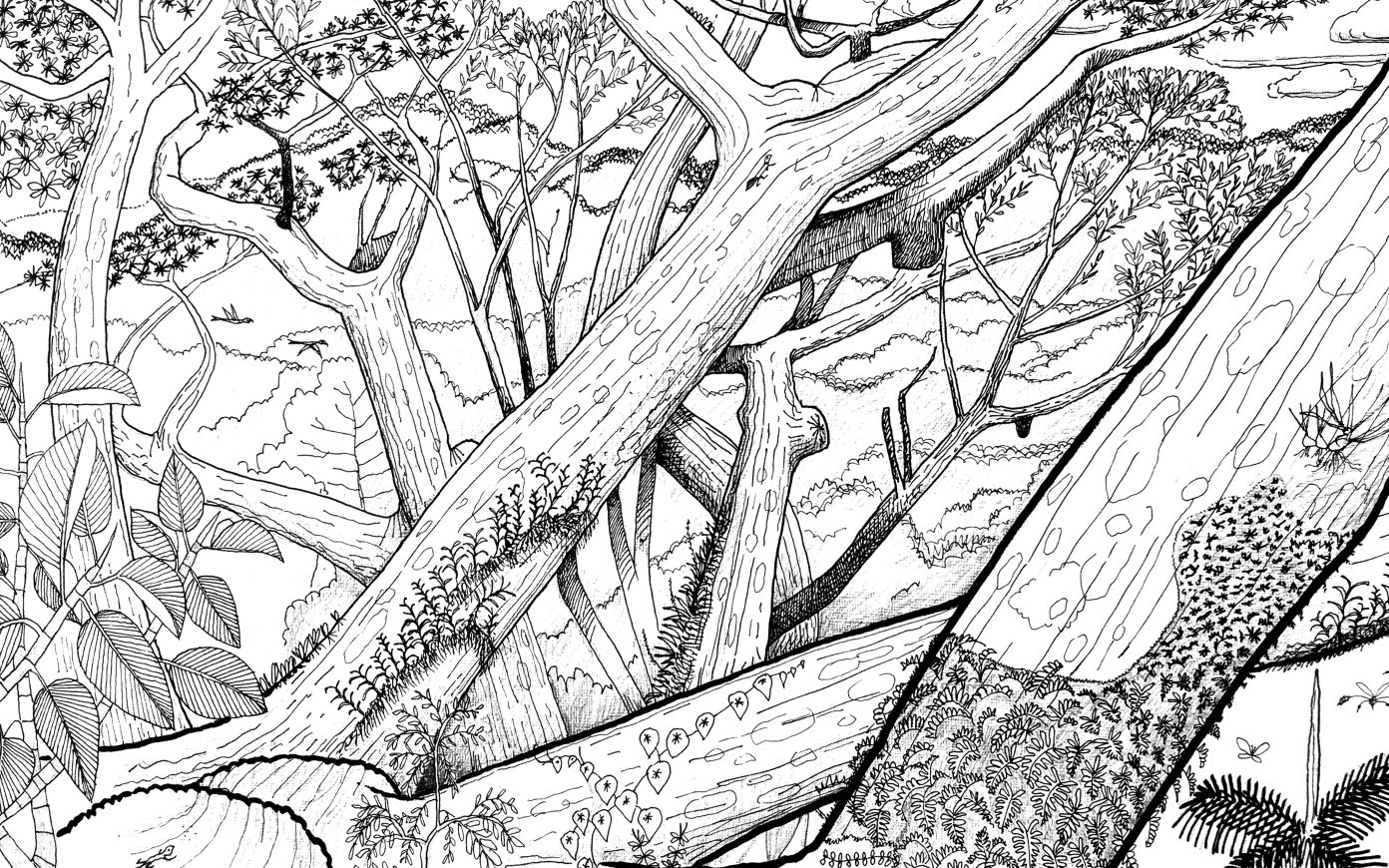

The Time of Trees
The rediscovery of the ecosystems services of nature in urban environments, in particular regarding pollution mitigation and fighting against heat islands, have put a new emphasis on the intelligence of trees, as botanist Francis Hallé describes “plant architecture.” He advocates making trees more prominent in cities, though as a prerequisite to any urbanization, which implies promoting an intimate knowledge of the way they operate and their temporality in order to improve their planting, maintenance, and respect.
Explorer Tous les tags
 stream voices
stream voices
Eager to share more generously the results of its collaborations and research, PCA-STREAM publishes STREAM VOICES, its online magazine!
